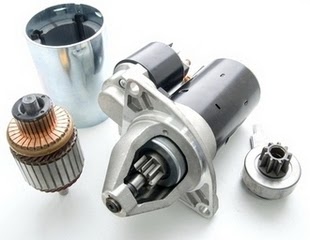
Is sugar in a gas tank really bad?
Content
One of the most popular myths living in automotive history is the old sugar tank prank. However, what actually happens when sugar is added to the gas? Is sugar in a gas tank really bad? Short answer: not much, and it's unlikely to cause any problems. While it was proven in 1994 that sugar doesn't dissolve in unleaded gasoline, it's possible that adding sugar to your fuel tank can cause problems with your car, but not in the way you might think.
Let's take a few minutes to look at the claims, explore the origins of this tall tale, and explain the process for dealing with this problem should it happen to you.
Where did the myth that sugar damages the engine come from?
The myth that if someone puts sugar in a car's fuel tank, it will dissolve, get into the engine and cause the engine to explode, is false. It initially gained some legitimacy and popularity back in the 1950s when people reported that someone put sugar in their gas tank and they couldn't start the car. The problem is that the problem with starting the car was not related to the destruction of the engine by sugar.
Back in the 50s, fuel pumps were mechanical, and many of them were mounted on the bottom of the fuel tank. What will happen is that the sugar will remain in a solid state and turn into a mud-like substance. This can clog the fuel pump and cause fuel restriction problems resulting in difficult starting or operation. In the end, the owner of the car drove the car to a local shop, the mechanic drained the gas tank, cleaned all the sugar "dirt" from the tank, fuel pump and fuel lines, and the problem was solved. Modern cars have electronic fuel pumps, but they can still fall prey to obstacles that can cause starting problems.
Science showing what happens when sugar is added to gas
Back in 1994, a UC Berkeley forensic professor named John Thornton tried to prove that adding sugar to gasoline was a myth that would not cause an engine to seize or explode. To prove his theory, he added radioactive carbon atoms mixed with sucrose (sugar) and mixed it with unleaded gasoline. He then spun it around in a centrifuge to speed up the dissolution process. He then removed the undissolved particles to measure the level of radiation in the liquid to determine how much sucrose was mixed into the gasoline.
Less than a teaspoon of sucrose was blended out of 15 gallons of unleaded gasoline. It was concluded that sugar does not dissolve in the fuel, i.e. it does not caramelize and cannot enter the combustion chamber to cause damage. Also, if you take into account the numerous filters installed in the modern fuel system, by the time gasoline reaches the fuel injectors, it will be incredibly clean and sugar free.
What to do if someone put sugar in your gas tank?
If you feel like you've been the victim of a prank with sugar in your gas tank, chances are you have nothing to worry about, but you can still exercise caution before trying to start your car. As we have already said, the symptom of hard starting is not due to sugar mixing with gasoline and getting into the engine, but due to the fact that sugar turns into a mud-like substance and clogs the fuel pump. If the fuel pump becomes clogged, it may burn out or fail if it is not cooled by liquid gasoline.
So, if you suspect that someone has poured gasoline into your tank, chances are you have nothing to worry about. However, as a precaution, you may not start the car until it has been checked. Call a tow truck or mobile mechanic and have them check your fuel tank for sugar. If it has sugar in it, they will most likely be able to remove it from your tank before damaging the fuel pump and fuel system.

